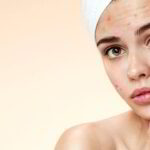Rosacea is one of the known common chronic conditions affecting up to 10% of the populace. Rosacea is a skin condition that influences the face, including the brow, nose, jawline, and cheeks. It can introduce in various distinctive manners however is formally characterized by persistent redness of the middle of the face going on for something like 3 months. Periodic skin flare-ups portray the condition. At the point when you get an erupt, your skin becomes red and ruddier than different regions of your skin. In further advanced cases, knocks, pimples, skin thickening, and eye disturbance might happen.
What Causes and Triggers Rosacea?
According to researchers and specialists, the Cause of Rosacea is Unknown. However, like other skin conditions, it is accepted that this skin condition Rosacea happens from hereditary elements, insusceptible reactions to microorganisms like microbes and Demodex (a little, non-risky parasite), and UV radiation.
A few substances and activities can make rosacea deteriorate in certain individuals.
Here are the most well-known triggers:
- Sun exposure
- Warm, cold, or sticky climate
- Hot or fiery food sources
- Hot showers
- Stress and nervousness
- Menopause
- A few meds (e.g., effective steroids)
- Liquor (explicitly red wine)
- Excessive exercise or effort
What are the Signs and Symptoms of Rosacea?
Rosacea’s appearance can fluctuate significantly starting with one individual then onto the next. More often, the entirety of the possible signs and symptoms doesn’t show up. Rosacea has different signs and symptoms listed.
Essential indications of rosacea include:
- Flushing/Facial impermanent redness.
- Persistent redness that doesn’t disappear
- Knocks and pimples
- Visible blood veins
Other possible signs and side effects of rosacea include:
- Eye irritation
- Swelling of the eyelids
- Burning or stinging
- Dry appearance
- Plaques (Raised red patches)
- Skin thickening
- Facial swelling
- Signs and side effects may develop past the face, influencing regions including the neck, chest, scalp or ears.
How To Diagnosis and Cure Rosacea?
Your Dermatologist will lead an intensive test of your signs and symptoms and will take a clinical history. During your test, you should educate your Skin specialist about any issues you are having with your face (redness, knocks or pimples, consuming, tingling, and so forth) There is no particular test to analyze rosacea.
There is no Curable solution for rosacea, yet you can handle it with treatment. Rosacea affects everybody differently and it can require some time to find a way to deal with your condition.
- Take care of your skin utilizing natural cleansers and oil-free, water-based skin health management items.
- Stay away from items that contain:
- liquor
- menthol
- witch hazel
- exfoliating agents
- Create a treatment plan with your skin doctor. This is typically a routine of anti-toxin creams and oral anti-toxins.
- Other steps include:
- staying away from direct daylight and wearing sunscreen
- trying not to drink liquor
- utilizing lasers and light treatment to assist for certain extreme cases of rosacea
- microdermabrasion medicines to diminish thickening skin
- taking eye meds and anti-microbials for ocular rosacea
While there is no solution for rosacea and the reason is unknown, clinical therapy is accessible to control or reduce its signs and side effects. If in case that you presume you may have rosacea, meet with your skin specialist.


